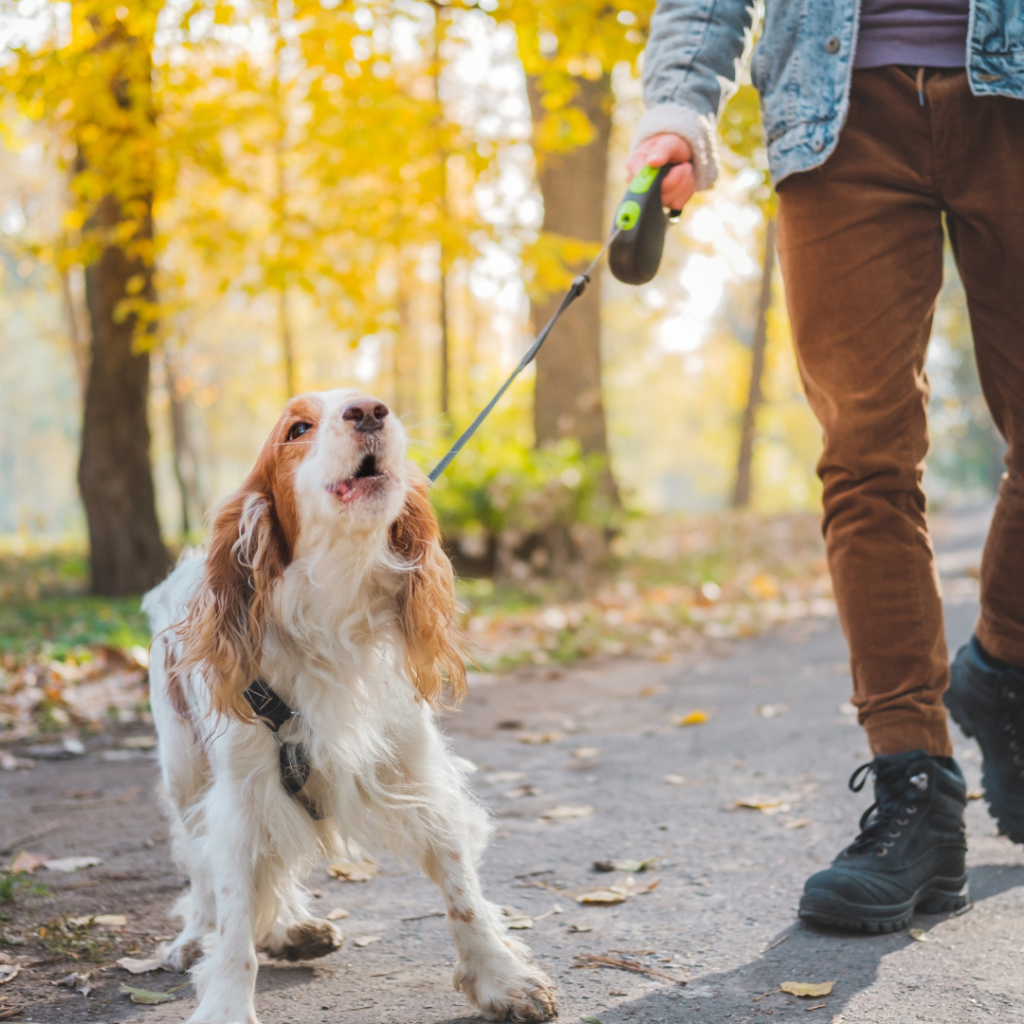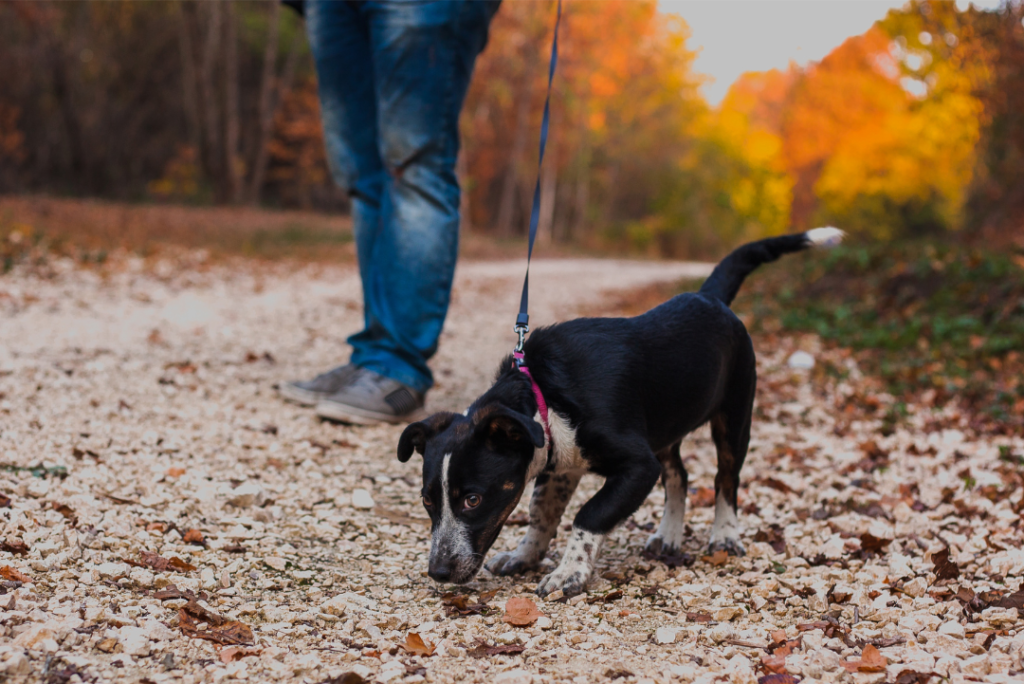How to Leash Train a Dog That Won't Walk?

Leash training is considered an important part of dog etiquette. It teaches your dog discipline, obedience, and cooperation while on a walk with you and keeps both your dog and you safe.
Walking with a dog that isn’t leash trained makes the walk stressful, unsafe, and unenjoyable for both the dog and the owner.
It is recommended you start leash training your dog while it is still a puppy. However, it’s never too late if you have an older dog.
But the most complaints dog owners make is that their dogs won’t even walk or may just decide to stop walking while on the road, which brings us here.
Why Won't My Dog Walk on a Leash?
Do you have questions on how to leash train a dog and why your seemingly well-behaved dog has refused to walk on a leash with you?
From research and experience, we found out there are a few not-so-common reasons why your dog might refuse to walk on a leash.
Don’t assume dogs are naturally supposed to be used to collars and leashes because most dogs use them. Dogs are inquisitive and love their freedom. The idea of a leash and a collar that limit their movement is likely to be rejected at first.
Another reason for walk refusal is anxiety. The idea of going for a walk outside the house might just scare your dog. For a dog that has moderate to severe anxiety, they might find things like other people passing, moving vehicles, etc., frightening. You have to reassure them that they’re not in danger.
You need to be patient and introduce the collar and leash training just like you’d do for a puppy.
Your dog’s experience with a leash can also be a factor. If every time you’ve tried to use a leash with your dog, you end up bathing them, doing an activity that increases their anxiety, using leash tools that miscommunicate with them, or the leash itself inflicts pain, they definitely won’t want one around their neck again.
How To Leash Train a Puppy

The first thing to do is to make your puppy comfortable with the leash and collar around their neck. You want to carefully play with the collar around its neck and give it a treat anytime you use a leash. This simple act would reduce your puppy’s fear of the leash and make it more accustomed to leash-and-collar time with treats and fun predictors.
Introducing a collar and leash to your dog while it’s still a puppy is best as this makes them very familiar with it. Growing up with the collar, the dog doesn’t have any reason to be scared of it. This process is called Conditioning.
Being introduced to a leash early enough also saves your dog from the anxiety that comes with using a leash. It also saves you from the stress of trying to get your dog used to a leash when they are older, and maybe a bit more stubborn!
When trying to leash train your puppy, you should start with walking indoors, around your home, your backyard, and any other familiar and safe spaces.
After each successful walk, give your pup a treat. Let the walk be enjoyable for your puppy. Give it a bit of freedom while you hold and carefully pull the leash to guide and correct your puppy. Use treats as rewards to caution and discipline your pup.
The next step is to take the walk outside. The only difference between the practice you’ve done indoors and outdoors is new challenges that come in the form of distraction, different sounds, different smells, and interesting sights.
Just repeat the same procedure as you’ve done indoors. Play and give more treats, and you should have no problem walking with your puppy on a leash.
A key factor though is that when you get to this step, your leash work should be to a point where you can guide your puppy more directly so they don’t wander unless released, and so that they don’t accidentally sniff or eat something off the ground that can be dangerous to them.
How To Leash Train an Older Dog
Leash training an older dog is very similar to training a puppy. The only difference is that older dogs are stronger, making controlling them difficult.
Follow these steps to instil control:
- After putting on the leash, head towards the door, and if your dog gets excited and pulls, turn around or stop moving. Repeat this process until your dog is calm and stops moving as well.
- If your dog is always excited whenever it sees the leash, try putting it on the leash for about 15 minutes but don’t leave the house even if it prompts you to.
- Be the first to take a step when walking. And when your dog pulls, stop moving till it stops pulling. By doing this, they learn to understand that they need to be calm and follow your instructions.
- Repeat this process around the house and when deciding the direction you want to go, always reward your dog for good behavior, and be consistent.
Have you followed the steps above, and your dog still won’t walk? Don’t get worried; you are not doing anything wrong.
Older dogs find walks interesting, and generally, they love to exercise and run around. So why does your dog not want to walk on a leash?
Different things can be responsible for why your dog does not want to walk on a leash even after proper leash training. We’ll discuss a few.
What May Be Causing Your Dog Not To Want To Walk On A Leash

Anxiety
Dogs, even older dogs, can be generally scared when you introduce a collar to them for the first time. Collar and leash are often identified as a threat to their freedom, and this can make them refuse to walk on a leash.
Also, dogs can be anxious when you take them to walk outdoors for the first time because of the loud noises of moving vehicles, people, other animals, and distractions. It feels like a whole new world they may see as a threat and be scared of.
You can try familiarizing your dog with the walking routes and reassure them that they’re safe whenever they’re scared. Contrary to human instinct, though, reassurance is not in the form of traditional “comforting” of your dog. The most reassuring act you can offer your dog when they’re scared is to ignore their fear and continue to instil structure. This shows them that there is nothing to fear and it’s business as usual. Traditional comforting in the form of petting and soft speaking to your dog is seen by the dog as a reward and reinforces their fear. They look to you for reward, so they’ll believe their fear is the right choice. Follow the steps mentioned above to introduce the collar and leash to your dogs.
Pain
As a responsible dog owner, you should generally be able to tell when your dog is not happy. If you are trying to take your dog out on a leash and it’s restrained, there could be something wrong, and you need to pay attention.
If your dog willingly accepts to walk on a leash and starts restraining out of the blue, you should be on alert because your dog could be in pain. You should check their feet and ensure the collar isn’t too tight around their neck.
Some other possible causes of pain include infection, metabolic disorders, fever, etc. You need to pay attention and care for your dog as needed.
Conclusion
Going on walks with your dog is a lovely bonding exercise and way to spend time together in nature and enjoy each other’s company. It is important you leash train your dog to make the walk enjoyable and safe for both you and your dog.
And as a reminder, every community has dog leash laws that you need to abide by while taking your dog for a walk. So you want to ensure that you give your dog proper leash training and discipline before going on walks.
